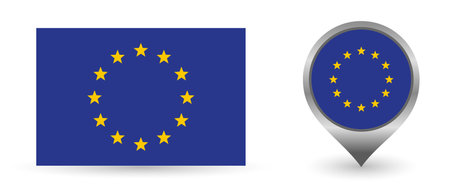1. Overview: Post-Brexit Data Transfer Landscape
Since the UK’s departure from the European Union, the regulatory environment for international data transfers has undergone significant transformation. UK organisations are now operating in a distinct legal framework, no longer fully aligned with the EU General Data Protection Regulation (GDPR). Instead, they must adhere to the UK GDPR and the Data Protection Act 2018. This shift has far-reaching implications for businesses managing cross-border flows of personal data, especially when engaging partners, customers, or service providers beyond British shores.
Post-Brexit, the UK is considered a ‘third country’ under EU law, fundamentally altering how data can be transferred between the UK and both EU Member States and other global territories, such as the United States. The era of seamless data movement across Europe is over; new compliance hurdles have emerged. UK organisations must now navigate Standard Contractual Clauses (SCCs), adequacy decisions, and specific UK transfer mechanisms to lawfully share information overseas.
This evolving landscape means that every business handling personal data—whether in retail, finance, healthcare or technology—must remain vigilant. Understanding the nuanced differences between EU and UK requirements is essential not only to stay compliant but also to maintain trust with clients and partners at home and abroad. In this article, we’ll explore what these changes mean in practical terms, providing actionable insights for those responsible for managing data protection in a post-Brexit Britain.
2. Understanding SCCs: The UK Approach
Following Brexit, the UKs approach to Standard Contractual Clauses (SCCs) has diverged from that of the European Union, creating a unique set of compliance requirements for organisations transferring personal data internationally. SCCs remain a cornerstone for ensuring lawful cross-border data flows where no adequacy decision is in place, but the UK has tailored its own version to reflect post-Brexit realities and regulatory expectations.
Unpacking UK-Specific SCCs
The Information Commissioner’s Office (ICO) introduced the International Data Transfer Agreement (IDTA) and an addendum to the EU’s SCCs, providing businesses with flexible mechanisms to safeguard personal data leaving the UK. These frameworks are vital for businesses engaging with partners or service providers outside the UK, especially where US-based processors or cloud services are involved.
Recent Updates and Practical Adoption
The following table summarises the key distinctions between EU and UK SCC mechanisms:
| Aspect | EU SCCs | UK IDTA/Addendum |
|---|---|---|
| Governing Law | EU Member State law | English law or relevant UK jurisdiction |
| Supervisory Authority | EU Data Protection Authority | UK ICO |
| Adoption Date | June 2021 (new model) | March 2022 (IDTA effective) |
| Applicability | EU to third countries | UK to third countries (including EEA post-Brexit) |
| Addendum Option | N/A | Addendum allows use of EU SCCs with UK-specific clauses |
Key Considerations for Compliance
For UK organisations, selecting the right mechanism depends on several factors: the destination country, existing adequacy decisions, and contractual relationships. It’s essential to conduct transfer risk assessments, document safeguards in contracts, and monitor developments from both the ICO and international partners. Adopting either the IDTA or the addendum requires reviewing existing agreements and updating internal policies to reflect new obligations and best practice under UK data protection law.

3. Adequacy Decisions: What They Mean for British Businesses
When it comes to international data transfers in a post-Brexit landscape, adequacy decisions have emerged as a cornerstone of compliance and operational efficiency for UK businesses. Simply put, an adequacy decision is a formal recognition by the UK government that another country, or territory, offers a level of personal data protection essentially equivalent to that provided under UK data protection law. For British companies, this translates into smoother and less bureaucratic cross-border data flows, particularly with the European Union (EU) and European Economic Area (EEA).
The Significance of Adequacy Decisions
For many organisations, adequacy decisions are more than just legal formalities—they’re enablers of business agility. When the UK secured its own adequacy status from the EU, it preserved frictionless data exchanges essential for everything from e-commerce to cloud services. Likewise, when the UK grants adequacy to other nations, British firms can transfer personal data without needing additional contractual safeguards or risk assessments, saving time and resources while reducing legal exposure.
Strategic Implications for Cross-Border Operations
From a strategic standpoint, the presence—or absence—of an adequacy decision directly impacts how British businesses structure their international operations. Adequate countries present low-risk opportunities for expansion or partnership, while non-adequate jurisdictions demand more robust contractual measures such as Standard Contractual Clauses (SCCs) or bespoke risk assessments. Companies with pan-European footprints or global ambitions need to closely monitor adequacy reviews both in the UK and abroad, as political shifts or regulatory changes could swiftly alter the landscape.
Navigating Uncertainty and Futureproofing Compliance
Given the evolving nature of data privacy frameworks on both sides of the Channel and across the Atlantic, savvy British organisations should not rely solely on current adequacy decisions. Instead, they should embed flexibility within their compliance strategies—mapping data flows, auditing vendor relationships, and preparing contingency plans for potential changes in adequacy status. In essence, proactive engagement with regulatory developments isn’t just good governance; it’s a competitive advantage in today’s digital-first economy.
4. UK-US Data Flows: New Challenges and Opportunities
Post-Brexit, the landscape for UK-US data transfers has shifted considerably. The invalidation of the EU-US Privacy Shield by the Court of Justice of the European Union (CJEU) in the Schrems II case reverberated across the Atlantic, leaving UK organisations uncertain about cross-border data flows. With the transition period over, the UK became a “third country” under EU law, but also needed to carve out its own approach to data protection and international transfers. This has presented both new compliance challenges and strategic opportunities for British businesses operating on a global scale.
Privacy Shield’s Demise: What It Means for UK Organisations
The end of the Privacy Shield framework removed a major mechanism for legitimising personal data transfers between the UK and US. As a result, many organisations have had to pivot quickly to alternative transfer tools, primarily Standard Contractual Clauses (SCCs). However, using SCCs is not simply a box-ticking exercise—businesses must also carry out Transfer Risk Assessments to ensure that US laws do not undermine the protections provided by SCCs.
Comparison of Data Transfer Mechanisms
| Mechanism | Status Post-Brexit | Key Considerations for UK Businesses |
|---|---|---|
| EU-US Privacy Shield | Invalidated (No longer applicable) | Must be replaced with alternative legal basis |
| Standard Contractual Clauses (SCCs) | Widely used; updated versions available | Require Transfer Risk Assessment and supplementary measures |
| Adequacy Decisions | No US adequacy decision yet | Awaiting potential future frameworks such as “Data Bridge” |
The Emergence of New Frameworks: Looking Ahead
The UK Government has indicated an intention to establish its own international data transfer mechanisms, including talks about a bespoke “UK-US Data Bridge.” While this remains in development, organisations should keep a close eye on regulatory updates from the Information Commissioner’s Office (ICO). In parallel, adopting robust privacy practices and investing in compliance frameworks can turn regulatory uncertainty into a competitive advantage.
Practical Next Steps for Compliance
- Review all current data transfers to the US and map relevant data flows.
- Implement updated SCCs and conduct thorough Transfer Risk Assessments.
- Monitor progress on new UK-US frameworks and prepare for swift adoption once finalised.
- Engage with trusted legal advisors or privacy professionals to maintain agility in your compliance strategy.
This evolving environment presents an opportunity for forward-thinking brands to reinforce trust with consumers by demonstrating their commitment to safeguarding personal data—transforming compliance from a burden into a brand asset.
5. Practical Steps and Best Practices for Compliance
For UK organisations engaged in international data transfers post-Brexit, maintaining robust compliance is no longer a simple box-ticking exercise—it’s an ongoing strategic imperative. The shifting landscape of SCCs, adequacy decisions, and evolving UK-US data flows demands a proactive approach that goes beyond mere legal minimums. Below, we outline actionable recommendations tailored to the British context, enabling organisations to stay ahead of regulatory scrutiny and build trust with stakeholders.
Conduct Comprehensive Risk Assessments
Start by mapping your data flows: identify what personal data you transfer internationally, where it’s sent, and which third parties are involved. Perform Transfer Risk Assessments (TRAs) for each scenario, evaluating the legal environment of recipient countries—especially if relying on SCCs or transferring data to the US under current frameworks. Leverage guidance from the Information Commissioner’s Office (ICO) to ensure your assessments are thorough and defensible.
Maintain Rigorous Documentation
Documentation is your first line of defence in demonstrating accountability. Maintain clear records of all international transfers, including the lawful basis, risk assessment outcomes, and safeguards implemented (such as technical and organisational measures). Regularly review and update Data Processing Agreements (DPAs) to align with the latest UK GDPR requirements and ICO recommendations.
Strengthen Vendor Management
Your compliance is only as strong as your weakest link—so embed due diligence into your procurement processes. Assess vendors’ data protection credentials before onboarding, ensuring they adhere to UK-specific contractual clauses and SCCs where necessary. Establish ongoing vendor monitoring programmes; require annual compliance attestations and swiftly address any changes in their security posture or sub-processor relationships.
Stay Agile Amid Regulatory Change
The global data landscape is in flux. Designate a team or individual responsible for tracking updates from the ICO, European Data Protection Board (EDPB), and relevant US authorities. Be prepared to adapt internal policies rapidly if there are shifts in adequacy status or new standard contractual clauses are introduced.
Embed Data Protection by Design
Finally, treat privacy as a core brand value rather than a bolt-on obligation. Integrate privacy impact assessments into every new project involving cross-border data transfers. Communicate transparently with customers about how their data is handled internationally—a move that not only mitigates risk but also strengthens trust in today’s privacy-conscious marketplace.
6. Looking Ahead: Anticipated Changes and Strategic Insights
As the landscape for international data transfers continues to evolve post-Brexit, UK organisations must remain agile in their approach to compliance. Regulatory shifts are on the horizon, with the Information Commissioner’s Office (ICO) expected to provide updated guidance as new trade negotiations and global privacy standards develop. The UK government may revisit its adequacy decisions, especially in response to changes within the EU or US frameworks, while potential amendments to Standard Contractual Clauses (SCCs) or the adoption of innovative transfer tools could reshape operational requirements.
Staying Ahead of Regulatory Developments
Keeping abreast of anticipated regulatory updates is paramount. As UK-US data flows attract greater scrutiny—particularly following recent US legislative developments and changes to transatlantic agreements—businesses should proactively monitor announcements from both the ICO and the Department for Digital, Culture, Media & Sport (DCMS). It will be essential to review internal processes regularly, ensuring rapid adaptation to new legal obligations without disruption to business continuity.
Evolving Guidance: What to Watch For
Organisations should expect evolving guidance around risk assessments, documentation standards, and mechanisms for responding to data subject rights. Greater emphasis may be placed on transparency and accountability, prompting a renewed focus on vendor management and contractual diligence. Keeping data protection officers and legal teams well-informed through ongoing training will help maintain robust compliance postures as expectations shift.
Long-term Strategies for Future-Proofing Data Flows
To future-proof international data flows, UK brands must adopt a holistic approach. This includes embedding privacy by design into digital transformation projects, fostering cross-functional collaboration between IT, legal, and compliance teams, and building scalable frameworks that accommodate diverse transfer scenarios. Proactively engaging with industry bodies and participating in regulatory consultations can also offer early insights into forthcoming changes, allowing businesses to shape best practices and influence policy development.
Ultimately, resilience will stem from a blend of vigilance, adaptability, and strategic foresight. By positioning privacy as a driver of trust and competitive differentiation, organisations can navigate uncertainty confidently—transforming regulatory challenges into opportunities for brand growth on the international stage.


